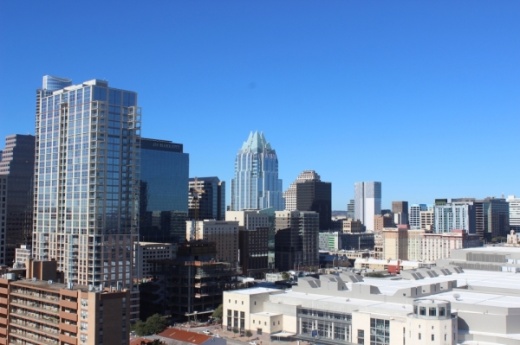The initiative follows a string of high-profile stabbings committed in Central Austin at the start of the year, including a deadly attack at a burrito shop on South Congress and a stabbing spree near Neches Street that left multiple people injured as well as a recent APD report that gun violence is on the rise citywide. Police Chief Brian Manley confirmed last month in a press conference that violent crime, generally, was also on an upward trend.
However, even if statistics begin showing a drop in violent crime, curbing the fear of violent crime remains a challenge in itself, according to downtown police commander Jason Bryant. Bryant said the police department’s philosophy to increase police presence as a deterrent becomes tricky with the number of vacancies in the department.
“It doesn’t really resonate with someone who feels unsafe to tell them, ‘Hey, statistically, we’re doing a job’—they want to see more police officers,” Bryant told the Downtown Commission on Feb. 19. “A minimum of 80% of our officers are being deployed on bikes. That creates more visibility, and I think that makes people feel safe.”
Bryant said adding more officers to the downtown patrol would be easier if the department was fully and “adequately” staffed. The Downtown Commission responded by unanimously approving a resolution to recommend City Council work to fully staff the APD.
Commissioner Rich DePalma said he wanted the city to get to a point where the threat of violence downtown is not even a conversation anymore. DePalma said as the budget cycle for fiscal year 2020-21 approaches, the Downtown Commission could continue advocating for increased police hiring.
For this violent crime initiative, Bryant said the police department is receiving 20 state troopers per night from the Texas Department of Public Safety and five to six officers from the UT Police Department.
In the first three weeks of the program, Bryant said there were 1,236 self-initiated law enforcement interactions—calls not initiated by a 911 call—which he said was an uptick. Those interactions resulted in 146 misdemeanor arrests, 55 felony arrests, 176 cite-and-releases, and four firearm confiscations.
The department is also working on increasing lighting along the Sixth Street corridors to enhance the reliability of the police department’s high-activity location observation cameras, or H.A.L.O cameras. Bryant said the department was aiming to put additional cameras—should funding allow—along Fifth and Seventh streets.





